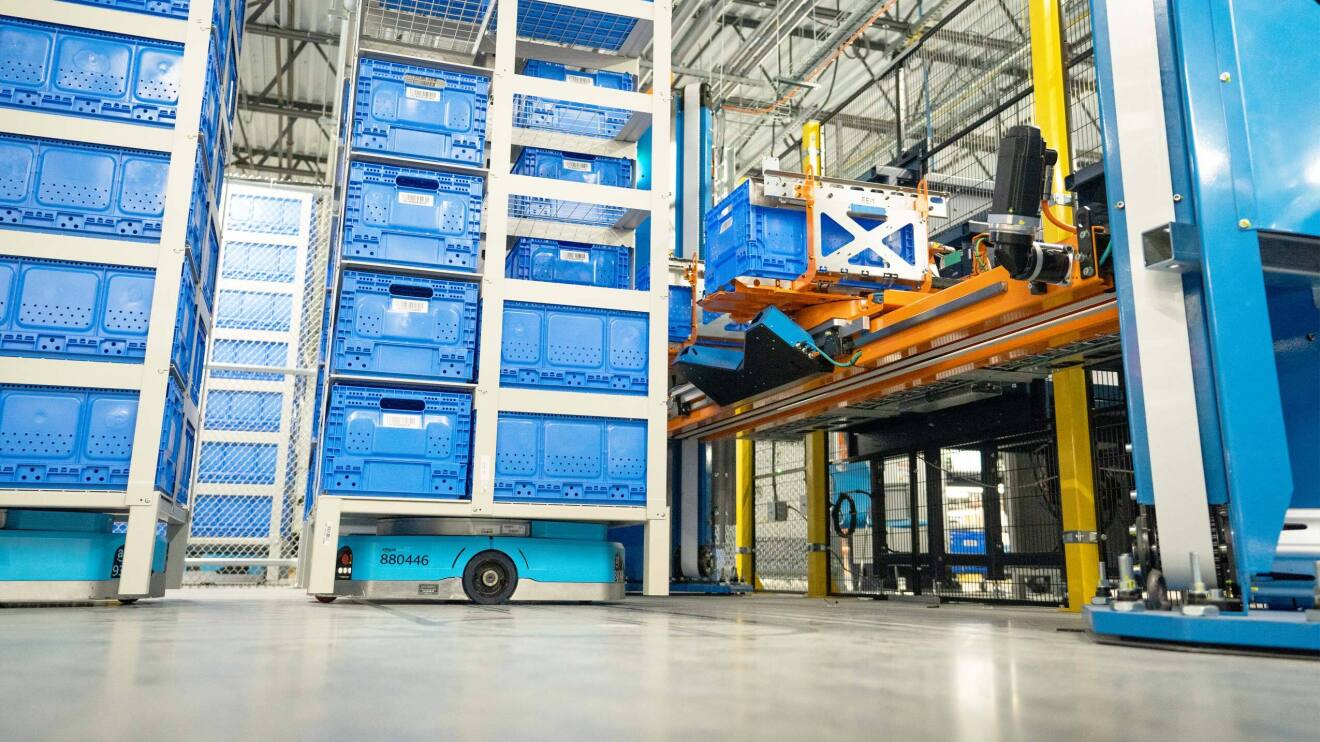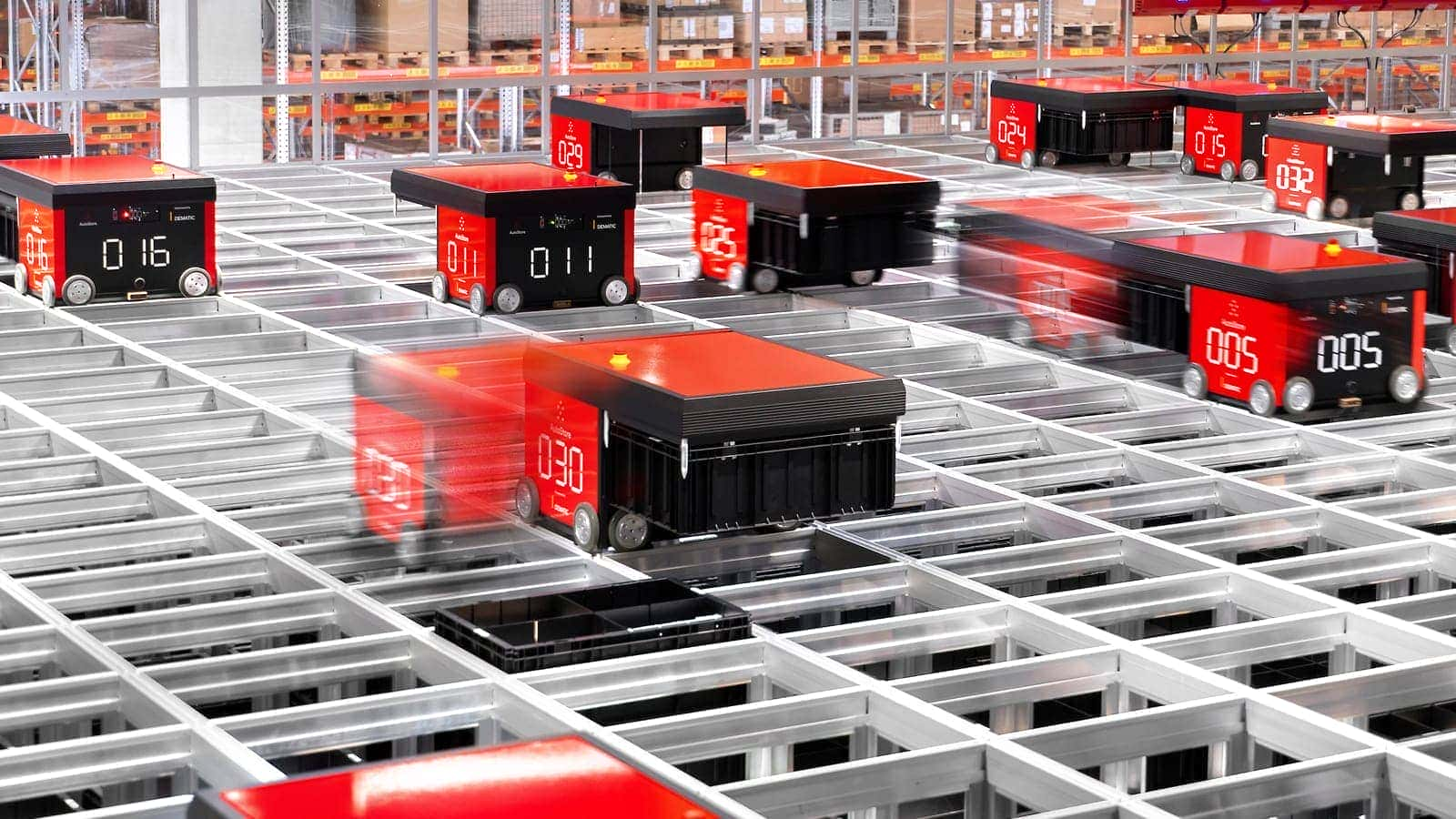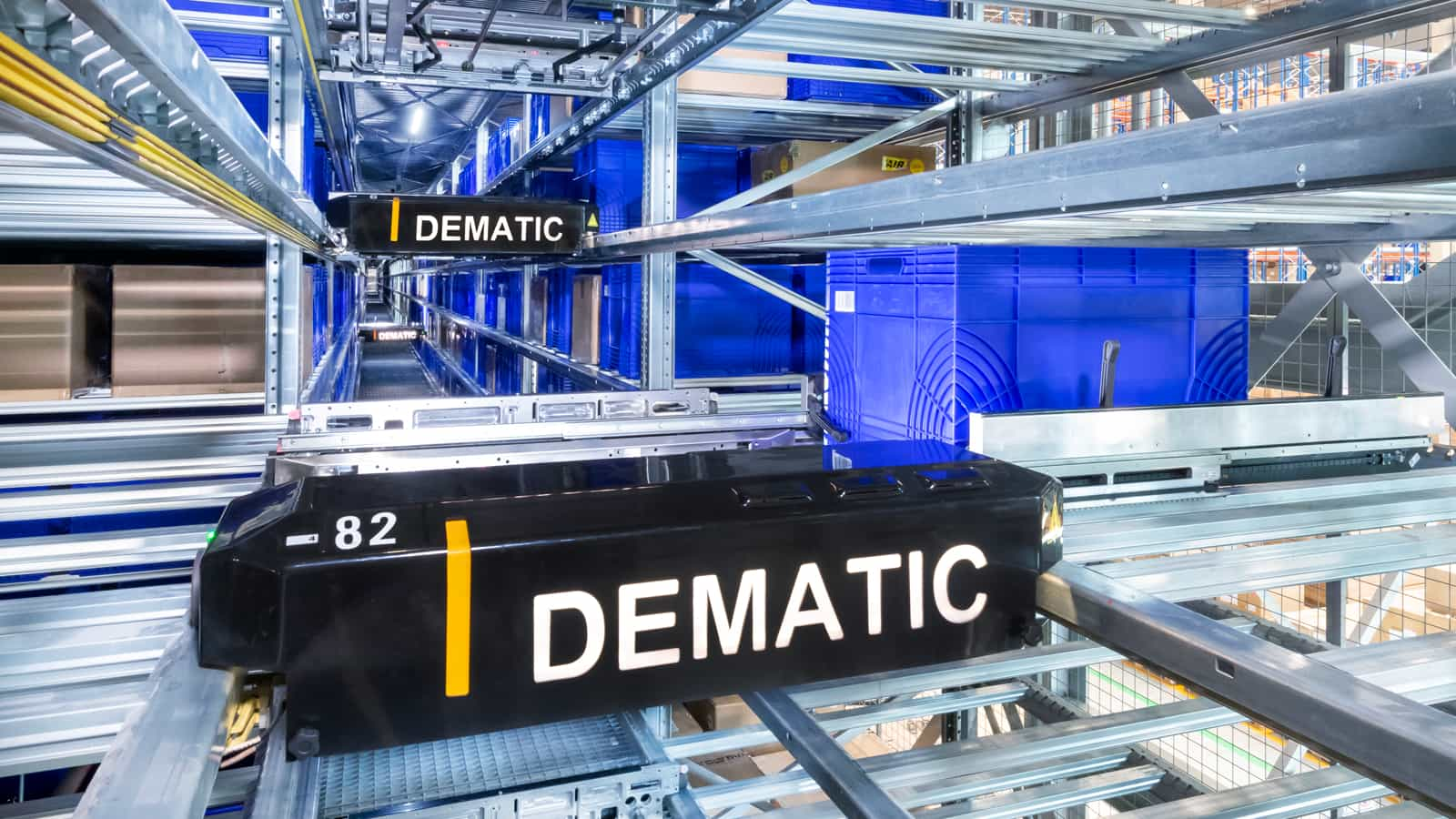Alternatives to 6 River Systems
1. Amazon Robotics
+Pros
- Unparalleled operational scale and proven performance
- Proprietary hardware-software integration
- Documented performance improvements
-Cons
- Unavailable for direct procurement by external businesses
- Substantial capital investment requirements
- Implementation complexity and technical expertise demands
One highlighted feature and why it's amazing
Serves as the central orchestration system, coordinating over 1 million robots globally through real-time optimization algorithms that reduce travel time by 10% while managing complex logistics scenarios.

Another highlighted feature of why it’s amazing
Centers on the Proteus platform, which utilizes advanced SLAM navigation and dynamic obstacle avoidance to operate safely alongside human workers without requiring fixed infrastructure.
2. AutoStore
+Pros
- 75% warehouse footprint reduction capability
- Proven reliability with 99.9% system uptime
- AI-driven optimization through CarouselAI™ technology
- Scalable architecture enabling growth from 10,000 to 1 million+ bins
-Cons
- Substantial $500,000-$2M entry costs
- 12-24 month implementation timelines
- SKU compatibility constraints with irregular-shaped items
- Implementation complexity requiring dedicated cross-functional teams
One highlighted feature and why it's amazing
Enables 75% warehouse footprint reduction through vertical storage optimization that maximizes inventory density within existing facility constraints.

Another highlighted feature of why it’s amazing
Combines computer vision, machine learning, and robotic manipulation to handle diverse SKUs without manual training requirements.
3. Dematic
+Pros
- Proven enterprise performance with 50% efficiency improvements and 99.5% accuracy rates.
- Comprehensive integration platform with AutoStore robotics, AI analytics, and warehouse execution systems.
- Enterprise-grade reliability with 15-minute carrier replacement capabilities and manual access during maintenance.
- Financial stability and support from KION Group backing.
-Cons
- High implementation investment exceeding typical SMB automation budgets.
- Complex deployment requirements with 12-24 month implementation cycles.
- Limited SMB market focus compared to cloud-native competitors.
- AI model constraints with irregular-shaped items.
One highlighted feature and why it's amazing
Provides technical differentiation through aluminum construction enabling multi-deep storage and high-throughput retrieval cycles.

Another highlighted feature of why it’s amazing
Enables seamless coordination between automated storage, picking, and packing stations with documented performance improvements of 50% efficiency gains and 99.5% accuracy rates.
Other Alternatives
Geek+ Robotics
GreyOrange
KNAPP
How We Researched This Guide
About This Guide: This comprehensive analysis is based on extensive competitive intelligence and real-world implementation data from leading AI vendors. StayModern updates this guide quarterly to reflect market developments and vendor performance changes.
241+ verified sources per analysis including official documentation, customer reviews, analyst reports, and industry publications.
- • Vendor documentation & whitepapers
- • Customer testimonials & case studies
- • Third-party analyst assessments
- • Industry benchmarking reports
Standardized assessment framework across 8 key dimensions for objective comparison.
- • Technology capabilities & architecture
- • Market position & customer evidence
- • Implementation experience & support
- • Pricing value & competitive position
Research is refreshed every 90 days to capture market changes and new vendor capabilities.
- • New product releases & features
- • Market positioning changes
- • Customer feedback integration
- • Competitive landscape shifts
Every claim is source-linked with direct citations to original materials for verification.
- • Clickable citation links
- • Original source attribution
- • Date stamps for currency
- • Quality score validation
Analysis follows systematic research protocols with consistent evaluation frameworks.
- • Standardized assessment criteria
- • Multi-source verification process
- • Consistent evaluation methodology
- • Quality assurance protocols
Buyer-focused analysis with transparent methodology and factual accuracy commitment.
- • Objective comparative analysis
- • Transparent research methodology
- • Factual accuracy commitment
- • Continuous quality improvement
Quality Commitment: If you find any inaccuracies in our analysis on this page, please contact us at research@staymodern.ai. We're committed to maintaining the highest standards of research integrity and will investigate and correct any issues promptly.